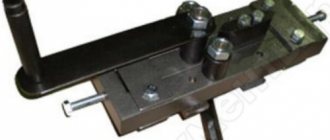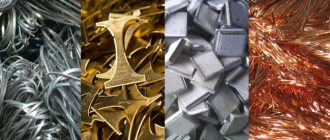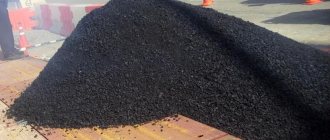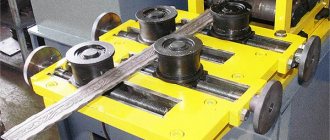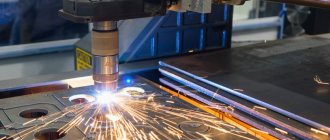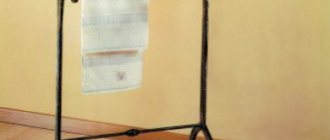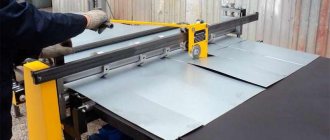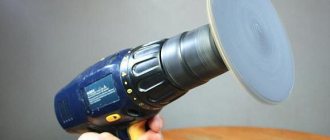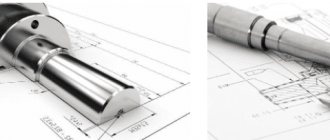Since ancient times, products that were created using hand-made artistic forging were a source of special pride for their owners, and the craftsmen who made them had honor and were always worth their weight in gold. Unlike manufacturers of furniture made of wood and other materials, blacksmiths from century to century enjoyed many times greater authority. Today, forged products have not lost their popularity at all; on the contrary, these days blacksmiths can produce real objects of art that delight and delight the eye wherever they are. For you and your everyday life, we offer forged products in a huge assortment.
Masters of the Alois forge network produce unique forged products in Moscow and the Moscow region. The type of decorative art we use, such as artistic forging, allows us to create real masterpieces in the form of: gratings, stairs and railings with original, ornate designs, fences, gates and gates with fancy patterns and many other intricate objects. Exclusive artistic forging is the crown of painstaking handwork. It combines sophistication and sophistication along with durability and reliability of the design.
Read more
What is artistic forging
Artistic forging is a special technology for manufacturing household and decorative metal products. It is used to decorate entrance doors, gates, furniture, lamps and other home furnishings. A distinctive feature of artistic forging: the presence of decorative elements. These include silhouettes of animals, birds, plants and complex patterns. Despite the high cost, unique metal products have remained popular for several centuries. Forging masters can make a real work of art.
Hot and cold forging are used for artistic metal processing. Metal processing technology is no different from conventional forging, but requires more delicate work.
These are the masterpieces you get when a real master does forging
Types of modern forging equipment
Modern blacksmith equipment for artistic forging is practically no different in form and purpose from ancient or medieval ones. The materials have changed - hammers and anvils, hammers and punches, vices and clamps are made from modern high-strength alloys, which significantly increases their durability and efficiency.
Another important change is the heating method. The traditional forge with hand or foot bellows is giving way to muffle furnaces for small workpieces and induction heating systems. This significantly reduces labor intensity, harmfulness and danger to health and property.
Forging machines
Forging machines are used for cold forging - changing the shape of a bar or profile workpiece under mechanical influence. These include:
Snail with a collar and a rotating blade Twister for cold forging Gnut for cold forging Waves for performing wave-like bending of the workpiece
- Bends are the general name for machines for bending a workpiece in one or several directions along a given radius.
- Waves for performing wavy bending of the workpiece, with a given pitch and wave radius
- Twisters, or torsion bars - for twisting a workpiece (or group of workpieces) along the longitudinal axis
- Snails - for forming spiral curls at the end of the rod.
Cold Forging Machine
Twisted Pipe Making Machine
Cold forging is perfect for making elements of fences and trellises, balusters, scrollwork, interior decor items and landscape design. A machine for cold artistic forging is easy to make with your own hands if the master has the skills of metalworking and welding.
Induction heaters
The induction heater is designed to heat the blank to the plasticity temperature. Heating occurs due to the fact that eddy currents, or Foucault currents, are induced in the surface layer of a metal placed in a strong alternating magnetic field. With their help, you can heat the blank much more evenly, faster and safer than using a traditional forge.
An industrial induction heater, even of low power, costs tens or even hundreds of thousands of rubles. Therefore, many diagrams like “How to make an induction heater with your own hands” are published on the Internet. It is important to understand that the design of the device uses high voltage and high power. For self-production, you will need engineering knowledge in the field of high-frequency currents and the skills of an electrician.
Metal processing stages
- Heat treatment of materials. This is a preliminary stage of work, during which the metal is heated to the desired temperature. Heating occurs in a forge or induction furnace. Heating time depends on the type of metal. The heat treatment process also includes cooling, tempering and hardening of the metal.
- Forging. The process of manufacturing parts. During forging, the master gives the material the desired shape using various techniques. The process of heat treatment and forging can be repeated many times, since the workpiece quickly cools and loses the temperature necessary for operation.
- Assembly. During the assembly process, parts are connected to each other into a single product. The simplest type of assembly is welding. At the welding site, the parts are heated and connected to each other: the heated metal instantly adheres and hardens. Assembly using rivets and clamps is also possible.
- Decoration. In simple forging, the blacksmith completes the work by polishing the product, giving its surface reflective properties and the desired texture. In artistic forging, additional techniques can be used: etching and embossing. Etching is the application of chemicals to the surface of a product that react with the metal and give it its original color. Embossing - applying an ornament using.
Areas of application of artistic forging
The scope of application of forged products is extensive. They can decorate the interior of rooms with different purposes or be an excellent addition when creating landscape design. Check out the table for some options for their use:
| Product type | Features of use |
| Cornices | Durable and aesthetic products are used to highlight the style of the interior. |
| Mailboxes | The product adds color to the facade of the house, is durable and resistant to corrosion. |
| Walls | Forging is used both to decorate external walls and indoors. It can be made in the form of an edging or a whole composition. |
| Fireplaces | Both gratings and cladding elements can be forged. |
| Screens and partitions | They can be installed both in residential and public spaces, and can be stationary or mobile. |
| Batteries | The forging covers the elements of the heating system, is attached to the walls, or can be a mini-screen. |
| Stairs | Forging is used both to decorate steps and to make railings. |
| Canopies and awnings | Strong, durable products that give the building a complete and solid look. |
| Doors, gates, gates | In addition to the decorative function, they provide protection against burglary. Strong and durable. |
| Fences | Forging can be used in combination with other materials: wood, concrete, brick. |
| Wells | They decorate the landscape and have anti-corrosion properties. |
| Pillars, lanterns | Installed on personal plots or in public places. Made from materials that are not subject to corrosion. |
| Weather vanes, chimneys | Can be included in a single composition. They are firmly fixed to the roof and have good anti-corrosion properties. |
| Furniture | It can be both outdoor and indoor, contain forging elements or be made entirely of metal. |
| Accessories | Includes a wide range of products: locks, handles, hinges, decorative ornaments, etc. |
Artistic forging technologies
Modern craftsmen working with metal have many techniques for making forged products in their arsenal. Most blacksmiths work in mixed techniques, using cast, forged, and stamped elements.
Let's look at the basic technologies for working with metal:
| Technology | a brief description of | Workflow Features |
| Stamping | The technique is used in the manufacture of a large number of identical parts. If the product must be double-sided, then stamps are placed on both sides. The resulting parts are then further processed. |
|
| Welding | The method is used to connect parts. They are preheated, then the master connects them and begins forging with a hammer. Some features of the forge welding process: |
|
| Casting | Art casting is used if you need to quickly produce a certain number of identical or symmetrical elements, sculptures, three-dimensional parts of the correct shape. |
|
| Rental | This is a process of mechanical action (compression, squeezing, embossing) on the surface of a metal in order to make it decorative. Art rolling allows you to reduce the final cost of the product and produce long forged elements with small and complex patterns. |
|
Methods for joining parts during forge welding
The following video will clearly demonstrate all the features of the artistic forging process:
Materials for artistic forging
Ferrous and non-ferrous metals are used in the work process. Their choice depends on the purpose of the product, features and conditions of its further use. In the table you will find a brief description of the metals used for artistic forging:
Types of metals and their brief characteristics.
| Material | Characteristic |
| Aluminum | Light silver metal. Durable, ductile, not subject to corrosion due to the oxide film. Various alloys are used. |
| Bronze | It is an alloy of tin (8–10%) and copper. Other alloys can be used, their characteristics depend on the percentage of metals. Bronze products almost do not oxidize in the open air. |
| Bulat | A composite obtained by combining iron and carbon, characterized by chemical and physical heterogeneity. High hardness material. |
| Cast iron | Alloy of iron and carbon (approximately 4%). It also contains impurities of phosphorus, manganese, silicon, and sulfur. The material cannot be welded or forged; products are made from it by casting. |
| Steel | Alloy of iron and carbon (no more than 2%). Easily molded under high heat. Properties depend on carbon content and other components. |
| Titanium | Durable, lightweight, corrosion-resistant metal of white-silver color. It lends itself well to forging, rolling, and operations performed under pressure. |
| Iron | Ductile metal, easy to roll, forge, stamp. At high humidity it oxidizes easily, so it requires additional protection. |
| Gold | “Eternal metal”, not subject to corrosion, soft and malleable, expensive. Colors and physical properties depend on additives. |
| Brass | An alloy of zinc (about 38%) and copper. Durable metal, easy to process, resistant to corrosion. For forging, brass with alloying additives is used. |
| Silver | The material is soft, does not require strong heating, and is processed using special tools. |
| Stainless steel | Corrosion resistant metal, carbon steel with other elements added. The properties of the material depend on the percentage of additives. |
| Copper | A soft metal with a red color. With high humidity it becomes covered with a coating - patina. Cannot be hardened, but can be processed. |
Artistic forging styles
Forged products can be made in any style; their choice depends on the customer’s preferences and the overall design concept. Some of the most popular stylistic trends in forging can be found below in tabular form:
| Style name | Common features |
| Classic | Strictness and conciseness, symmetrical patterns and sculptural forms. |
| Art Deco | Expressive lines, strict vertical lines, rounded corners. A combination of Egyptian and oriental motifs with abstract figures is possible. |
| Baroque | Many intricate patterns, complex graceful shapes, an abundance of details (curls, leaves, spirals, etc.). |
| Gothic | The upward direction of the elements, severity, some roughness in places, the presence of characteristic elements - spikes, arrows, crosses, trefoils, etc. |
| Romanesque | Monumentality, massiveness, dense, repeating symmetrical patterns. |
| Rococo | Lightness, filigree ornamentation, playfulness and asymmetry, the presence of subtle elements. |
Caring for artistic forging products
Forged products located near fire should not be washed with water!
Forged products are durable and do not require complex maintenance. Its features depend on the type of metal and operating conditions. The main enemy of metal products is corrosion, so if necessary, it is advisable to coat the product with a special compound or paint it.
Further care involves regularly cleaning the surface from dust and dirt.
General recommendations:
- To wipe the surface, special aerosols, wipes and damp sponges are used;
- It is undesirable to use abrasive cleaners and steel wool;
- To give forged products a spectacular look, you can wipe them with wax;
- If the surface is dull, you can use solutions of water and soda, ammonia or citric acid, chalk and dry wipes for polishing.
Advantages and disadvantages of artistic forging
Forged products are an elegant and durable decoration for both interior and exterior. They will fit perfectly into any proposed style. However, along with a number of advantages, there are some disadvantages. More details about both in the table below:
| Advantages | Flaws |
|
|
Cost of artistic forging
The final cost of each forged product is calculated individually. Its formation is influenced by many features, the main ones of which are the following:
- dimensions and number of elements;
- technology of working with metal;
- the material used or their combination;
- complexity of the design project;
- installation features.
Techniques for hot metal processing
To give metal parts the desired shape, the master uses various processing options:
- planting is a technique that allows you to obtain protrusions: dense thickenings of various sizes, which in further work can be shaped into leaves or petals;
- broaching – lengthening the original workpiece and reducing its cross-section; using crimping, you can increase the length of the workpiece several times and strengthen the metal;
- rounding - helps to round the corners of a square workpiece; To do this, the part is laid on an edge, and blows are applied to the opposite edge with a hammer: the workpiece takes the shape of an octagon and is gradually rounded;
- threading - hand forging involves creating products that imitate weaving (threading rods through each other); to do this, a hole is punched in one of the rods and the other is threaded through it;
- design of ledges - ledges are the flat ends of the workpiece, which help connect the parts; they are created by processing the part on an anvil;
- bending - with its help you can create a twisted part: a spiral, a curl, a loop; For bending, a special tool is used - a fork, with which the desired shape is formed.
In artistic forging, punching can also be used: creating holes to form a pattern or connect parts. But thanks to modern technologies, punching is often replaced by drilling.
Working with metal in a forge is difficult and dangerous - injuries and fires are possible
Renaissance style
The Renaissance era (from the French “renaissance” - rebirth) is a rethinking of ancient art, a kind of return to it. It was a real breakthrough with fresh, strong ideas in all areas of culture. Of course, the art of forging was no exception. In forging, such innovations were born as a round rod, and from it magnificent spirals and branches with luxurious flowers and leaves at the end, as well as a method of threading rods in “figure eights”. The result is a light, elegant, but durable lattice. The main decorative elements were spirals, braids, leaves, and volutes returned to use.
Main features of the style:
* Antique motifs
* Harmony, proportionality of details
* Round rod
* “Eights”, spirals, braids are typical elements
Artistic forging styles
| Renaissance | Forging in the Renaissance style | Forging styles |
Cold forging: limited elements and variety of products
The cold forging method, according to historians, first appeared in Mesopotamia and Egypt about 6 years ago. It does not require much knowledge or special tools. Essentially, cold forging is the bending of rods. Therefore, it is mainly used to create trellises, fences, fences, gates, gates, stairs and railings.
The most difficult thing in cold forging is connecting the rods using a welding machine. And the work itself on changing the shape of iron rods can be carried out both on homemade devices (bent, snail, wave and globe), and on professional machines. One of the most popular machines for cold forging is Azhur-Mini from the Azhurstal plant.
The advantage of cold forging is that you can make the tools yourself. Unless you have to buy a relay
Using the cold forging method, you can:
- bend;
- flatten;
- twist.
Its advantages include:
- lack of special skills for work;
- the ability to carry out operations on inexpensive or self-made devices;
- high level of productivity;
- the possibility of various combinations of basic elements and creating a huge number of unique products from them.
Disadvantages of the method:
- small selection of operations;
- a limited set of initial elements (rolled profiles, metal strip, solid and square rods).
Advantages of professional forging
The artistic forging workshop has the following advantages:
- modern equipment;
- manual technologies;
- experienced designers and constructors;
- implementation of truly large-scale and non-standard solutions.
At the same time, the design contains various details - crowns, twisted or bent parts, parts with clamps, tips or leaves. Perhaps the use of parts of different shapes and sizes, complexity of execution. Similar solutions in one area look good. This creates a unified style and overall perception.
Specialists will take preliminary measurements themselves or do the work according to the customer’s standards. The work takes no more than 6-9 days. The main processes involve preparing artistic solutions and sketches. Technological consultations are possible at each stage of cooperation. And production does not take much time.
We offer artistic forging in Moscow. Place an order on the website or call a specialist for details. An employee will help you choose ready-made solutions and offer a visit to experts for measurements in the Moscow region.
Types of artistic forging
There are two types of forging: free and die. A stamp is a special blank that sets the shape of a future product. The walls of the die prevent the heated mass of metal from spreading and deforming. Stamping is a simpler, almost automatic type of forging, which is often used in mass production. It allows you to produce many products of the same shape in a short period of time. For individual orders, free forging is used.
In open forging, the material is processed in two ways: manually and using equipment. This process requires professionalism and a high degree of concentration. The main tools of a craftsman for hand forging are a hammer and a sledgehammer. Machine forging is performed on a forging machine using a hammer and a hydraulic press. When heated, the crystals are destroyed, the metal structure becomes fine-grained and compacted.
Most studios, salons and workshops produce custom products. This allows you to supplement the sketch with the necessary elements and get a sofa or staircase that suits your interior. And the quality of exclusive products is higher than those sold in stores.
Exclusive, custom-made forged roses. You can’t buy products of this quality in a regular store.
Types of artistic metal forging
The most complex and refined products are produced using traditional hot forging. Using this method, you can forge both ordinary lattice rods and openwork forging elements, such as leaves and flowers, stylized animal figures and intricate ornaments.
Hot artistic metal forging
Cold forging does not allow one to achieve the same heights of artistic expression, but it has its obvious advantages: low cost and high repeatability of products in a series.
Cold forging
Cold forging is sometimes also referred to as the embossing technique. In this case, a pattern consisting of many dents and dashes that form a highly artistic image is applied to a thin sheet of metal using a set of pointed tools and a hammer.
Metals used
For artistic forging, pure metals and various types of alloys are used. These include:
- Bronze. This is an artificially created material made from an alloy of copper and tin. Bronze is hard, but malleable when processed; its structure allows it to imitate other metals.
- Brass. Yellow metal, looks like gold. It is made by combining copper and zinc. Brass can be varnished, painted, or given any texture.
- Copper. Basically, roofs and hoods are made from this material. Copper has a beautiful red-brown color and can be given different shades by polishing. Decorative copper items such as cups, frames and ornaments are also popular.
- Cast iron. It is made from an alloy of iron and carbon. Massive products are made from it: fences, spiral staircases. Cast iron is a malleable material, it can be covered with a patina and get any desired color: from black to golden.
- Steel. This is a universal material from which you can make any product, including a sewing needle. To produce steel, iron is combined with carbon - the resulting alloy is soft and ductile when heated, and becomes strong when solidified.
- Blued steel. To obtain this material, steel is dipped in oil and fired. During the cooling process, a protective film is formed that protects the metal from corrosion. From blued steel you can make thin lace products: carved shutters and fences.
- Stainless steel. It is created by combining iron with chromium, nickel and titanium. Stainless steel is a durable material that is difficult to texture. Most often it is sanded and lightly polished to achieve a matte finish.
- Zinc. When polished it gives a wide variety of shades. Suitable for massive outdoor products.
- Titanium. It has a noble dark shade and good reflectivity. Titanium furniture is ideal for modern high-tech style.
- Zinkotitan. A material that requires patience: it is difficult to machine, but chemical etching can produce beautiful textures.
- Gold. A very soft and pliable material, famous for its high cost. Miniature products are made from gold, most often jewelry. Gold plating is also popular: a product made of cheaper metal is covered with a thin gold film on top.
- Silver. Metal with the highest reflective properties. In ancient times, mirrors were made from silver; for modern decor, silver frames, trays, cups, and furniture trim are often ordered.
Regardless of the type of metal chosen, a product created by artistic forging will look beautiful and expensive. Metal interior details emphasize the status of the owner of the home and create a unique atmosphere.
Table made of bronze. Every detail is forged with love
Cold forging of metal
The second method of metal processing is rarely used. It is used for mass production of elements, the connection of which is carried out by welding. Finished products made using the cold forging method, although beautiful, are not unique. Such items do not belong to genuine artistic values.
Cold forging is the processing of metal without heating it. The material is deformed under the influence of a press, after which it is annealed. Precious metals are processed using this method; they have all the characteristics necessary for cold forging.
Application options
The most popular metal product: forged gates and fences. Massive or patterned, made of pure metal or alloy - they look equally sophisticated and elegant. But forged products are not just interior decoration. Metal shutters, stair railings, decorative gates and balconies are able to withstand high loads, sudden temperature changes and exposure to the elements.
Non-functional forms of interior elements include rotundas, fences for flower beds, figurines of plants and animals. They will decorate any garden and emphasize its individuality.
The ability to give a product any shape allows you to create designs of any complexity - thanks to this, artistic forging remains the most popular way of decorating a home.
A gate made in the shape of a dragon will attract the attention of guests and arouse the envy of neighbors
Where is artistic forging used?
Forged items are appropriate everywhere: both inside residential premises and in garden areas. The main thing is to understand and feel the style of the environment so that it harmonizes with the new metal accessories.
Naturally, forged items should support the existing aesthetics of the site and interior. Therefore, when choosing decorative elements, before ordering them, you need to study all possible samples most carefully.
The matter is made easier by the fact that almost all decorative forged elements get along well with any type of park or garden landscape.
Artistic forging is good everywhere: surrounded by marble sculptures of Italian squares, and against the backdrop of the bright greenery of English parks, and in the strict symmetry of French parks, and in estates of the classical Russian style. The main thing is a sense of proportion: is the ornament appropriate, are there too many decorative elements, etc.
Many small asymmetrical curls against an overall lush background are not suitable everywhere and not in every home or garden. Baroque, and this is exactly what it is, always requires large spaces both indoors and in open areas.
Modern technologies for forging and decorative metal processing make it possible to make things of any style, including the most modern. Their subtlety and elegance will decorate any landscape.
Interesting Facts
The peak of development of artistic forging as a separate art occurred in the 6th-8th centuries AD. To become a master, future blacksmiths began training in early childhood. At first, the apprentice only observed and helped the blacksmith: he handed over tools, looked after the stove, brought water and firewood. Gradually, the student was allowed to do simple work: preparing metal and forging small, simple elements. After 5-6 years of training, the young blacksmith was already able to independently produce various types of products: from door handles to forged swing gates.
The entire forging process was done by hand. An experienced craftsman could determine the type of metal by examining the breakdown of the product and the type of spark produced. The temperature was also determined by its appearance: focusing on the color of the red-hot part, the master accurately determined at what moment it warmed up to the required temperature.
Forged products made to order were especially popular. During the period from the 13th to the 15th century AD. e. Rich nobles loved to decorate their estates with forged fences, gates, window bars and various interior items. Many products have survived to this day and are a cultural achievement of the nation.
Hephaestus - ancient Greek god of fire and blacksmithing
Types of artistic forged products
It is impossible to describe all existing types in this article - there are too many of them. Let's go through some of them - the most popular.
Fencing
This is the most popular solution among owners of country houses and plots - fences with forged elements. A special place is occupied by forged gates, which can be located separately or built into the wall.
Gates also belong to this most popular group of blacksmith products. This is where the creativity of homeowners knows no bounds: from medieval doors with turrets to lace metal panels with swans.
Such fences can have protective functions, or can serve as zoning areas or small hedges for flower beds.
garden furniture
If possible, each owner of a plot of land tries to arrange the place as a recreation area with a table, benches and chairs. Artistic forging is suitable for this like nothing else, because metal products are not afraid of either precipitation or time.
Forged tables can be decorated in a wide variety of ways. They can be made only of metal, or can be presented with countertops made of other materials: stone, plastic, wood.
Forged benches are a separate issue; they are a very popular type of forged products. They are also made in combination with other materials, most often with wood.
Strength, durability, stability and high aesthetics, which will decorate any area near any home. This is an excellent choice of garden furniture option.
Garden gazebos
Such a gazebo is the ultimate dream of many owners of open garden plots. It is beautiful, functional, unique and extremely durable. This design will protect from bad weather and is not afraid of wind.
There are countless design options for gazebos; these are excellent prospects for high-flying thoughts.
Forged bridges
If there is water, you need a bridge. Even if it is the smallest one, it will bring comfort, originality and a unique fairy-tale atmosphere to the landscape of your site. Such bridges are usually made graceful, thin, with decorative elements in the form of plants, butterflies, and petals.
https://youtu.be/LoBmHmF2zZI
Arched ceilings and pergolas
A pergola is neither a gazebo nor a canopy. These are special structures for supporting flowers, from which entire walls and ceilings are made. With their help, you can create entire corridors of flowers and climbing plants.
Forged trellises and arches are excellent companions for the most exquisite plants; they will only emphasize the entire aesthetics of leaves, petals and tree trunks.
Country grills and other accessories
Outdoor barbecues have become the ubiquitous embodiment of outdoor recreation. We're not talking about regular barbecues - the little monstrosities scattered around public parks like trash. We are talking about garden barbecues, made according to sketches of artistic forging and having an additional role of decorating any personal plot.
If it is not possible to purchase expensive blacksmith furniture or household items, you can limit yourself to small accessories such as forged lamps, miniature stands for flowers, baskets for umbrellas in the hallway, etc. – there are a great many options for such little things.
Despite their small size, they will add a serious dose of high aesthetics to the overall picture.
https://youtu.be/eOQjp43kPro
Photo galleries
Gates and wickets
A family monogram on the gate will turn an ordinary house into a family nest
Gates made according to the client's sketch. Simple but tasteful
Beautiful gates can be made for a garage
Beauty is in every detail - that’s why artistic forging is so popular
Simple elements create a beautiful composition
Firebird on the gate - Russian fairy tales in the modern world
Fences and railings
Beauty is in simplicity. Behind such a fence can hide both a village hut and a three-story cottage
The stone pedestal and the fence, as if “grown” into it, create a single composition
Iron roses are in no way inferior in beauty to the tulips growing nearby. A professional blacksmith can breathe life into soulless metal!
It seems like an unremarkable fence. But even she is beautiful in some way
Interweaving of leaves and flower buds. The master did a great job
Thin branches, as if alive, entwine the fence. The composition seems fragile, but will last for centuries
Stairs and railings
Amazing beauty! Correctly selected colors create the impression of a play of light and shadow
Few people will notice a flower with four petals here, but everyone will appreciate the beauty of the pattern.
The staircase and chandelier were created by the same blacksmith and therefore fit perfectly together
Patterns, lines, flowers. Simple, elegant and beautiful
A very unusual pattern. Fancy forged railing elements
A wrought iron staircase complements the interior. And it seems that she and the chair are one whole. Here the work of the designer is no less important than the quality of forging
Forged patterns
There are many of them: from classic to the most modern and sometimes unexpected styles.
The following decorative elements can be made from wire or steel rods:
- Spiral. This pattern is made up of many circles that become smaller towards the base of the spiral. The spiral can be double-sided or single-sided.
- Double helix. This is a complex spatial design in which each figure is a double-sided spiral. The largest diameter of the spiral ring is located in the middle part of the ornament, which is why this ornament is sometimes called a Chinese lantern. This element is made from two rods or thick wire.
- Volute. This is one of the most popular elements that can be arranged in large quantities and in different positions, creating a variety of patterns. It's essentially a simple curl. But it can be positioned differently and have a unidirectional concavity, when the curls are located on one side of the axis. Or they can be multidirectional, with curls on both sides of the pattern axis.
- Cool. Part of the rod or all of the rod is twisted in the same direction.
- Top. These forged products with a funny name are made to decorate the tops of window bars, fences and fences. These are rods with sharp edges, to which curls are then attached.
